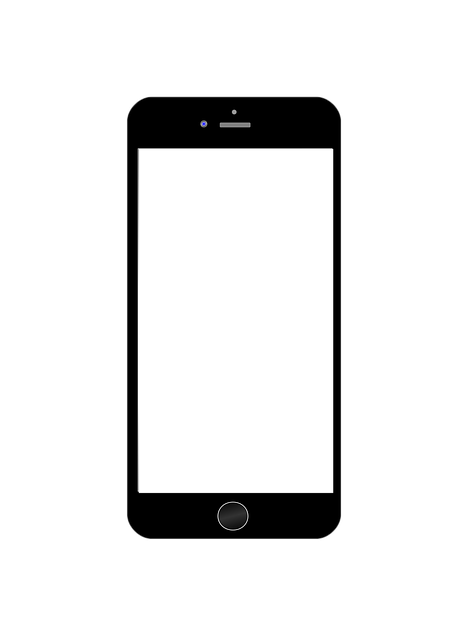The article provides comprehensive guidance on iPhone battery health, lifespan, and maintenance for extended efficiency. It explains that factors like app usage, screen brightness, background processes, and network activity significantly impact battery life. Users are advised to regularly check their iPhone's battery health in 'Settings' under 'Battery,' where they can assess performance and capacity. A battery with less than 80% maximum capacity may necessitate replacement. The article emphasizes that software updates can affect battery efficiency, sometimes temporarily reducing battery life but generally improving system performance over time. It also recommends professional battery replacements for those experiencing rapid battery drain to ensure proper device functionality. If your iPhone's battery is not lasting as long as it used to, replacing the battery can rejuvenate its performance and restore its ability to hold a charge. Regularly closing background apps, managing app usage, adjusting display settings, and limiting wireless features are all optimization techniques to extend new battery life. For those considering an iPhone battery replacement, it's important to visit Apple or an authorized service provider for a reliable solution that comes with warranty support and genuine Apple batteries. After a replacement, these strategies can help maintain optimal battery performance, ensuring your iPhone operates efficiently between charges.
Experiencing a swift depletion of your iPhone’s battery can be frustrating, especially when it hinders your day-to-day tasks. This article demystifies the factors contributing to rapid battery drain and offers actionable advice on how to address them. From understanding the signs of battery wear to a step-by-step guide for checking your device’s health, we’ll navigate through the essential steps. If your iPhone battery is beyond its optimal performance, you’ll learn when and where to replace it effectively, either by visiting Apple or authorized service providers. Additionally, after replacement, we’ll provide tips tailored to enhance your iPhone’s battery longevity, ensuring your device stays powered through your busy life.
- Understanding iPhone Battery Life and Signs of Battery Wear
- Diagnosing Common Reasons for Rapid Battery Drain on iPhones
- Step-by-Step Guide to Checking Your iPhone's Battery Health
- When to Consider Replacing Your iPhone Battery: Assessing the Need
- The Process of Replacing an iPhone Battery at Apple or Authorized Service Providers
- Tips for Optimizing Battery Life on Your iPhone After Battery Replacement
Understanding iPhone Battery Life and Signs of Battery Wear

iPhone batteries are complex systems that power your device, and understanding how they function is crucial for optimizing their lifespan and performance. Battery life can be influenced by a myriad of factors, including app usage patterns, screen brightness, background activity, and network connectivity. Keeping track of your phone’s battery performance over time can help you identify unusual draining patterns that may indicate it’s time to consider replacing an aging battery. Signs of battery wear typically manifest as a reduction in the amount of time your iPhone can operate before needing a recharge, despite similar usage habits. If your iPhone is consistently losing charge quicker than before, or if it can’t hold a charge at all after being plugged in for several hours, these are clear indicators that the battery may have degraded and could benefit from a replacement. Regular software updates can also help maintain optimal battery health by improving system efficiency and addressing bugs that might otherwise drain power unnecessarily. When contemplating replacing an iPhone battery, it’s advisable to consult with Apple or authorized service providers to ensure proper handling and to verify if your device is eligible for battery service under the terms of Apple’s warranty or service programs.
Diagnosing Common Reasons for Rapid Battery Drain on iPhones

iPhone batteries can sometimes seem like they have a mind of their own, draining rapidly even when usage is minimal. To diagnose and address this issue, it’s important to consider several common reasons that may lead to a rapid battery drain on iPhones. Firstly, applications running in the background can significantly impact your device’s battery life. Ensure that you close apps after use or utilize the App Library to prevent them from running needlessly in the background. Overuse of location services and frequent GPS navigation can also strain your iPhone’s battery. If you find that you frequently check your location, consider adjusting these settings to conserve power.
Another factor to investigate is the impact of system updates on your device’s battery performance. While updates are crucial for security and functionality, they can temporarily increase battery consumption as the software adapts. Regularly updating your iPhone to the latest iOS version, however, can also improve overall battery life over time. If your iPhone is still draining quickly after these adjustments, it might be time to consider a replacement battery. Worn-out batteries are a common issue and can typically be replaced by authorized service providers or experienced technicians. This simple fix can restore your device’s battery longevity and performance, making it a cost-effective solution for prolonging the life of your iPhone. Always ensure that any battery replacement is performed by a professional to avoid further issues with your device.
Step-by-Step Guide to Checking Your iPhone's Battery Health

If your iPhone is draining quickly, it might be time to assess its battery health. To do this, navigate to ‘Settings’ on your device, then select ‘Battery’. Scroll down until you find ‘Battery Health’, which will provide an estimate of your battery’s maximum capacity and whether it’s functioning within expected parameters. If the battery health is below 80%, it may be affecting your iPhone’s performance and longevity between charges. In such cases, considering a replacement might be necessary. Apple provides a service to replace the battery if its capacity drops below this threshold. This service ensures that your device can maintain optimal operation after the replacement. It’s advisable to back up your iPhone before heading to an authorized service provider or visiting an Apple Store to have the battery tested and potentially replaced. Remember, replacing the battery can significantly improve the life of your iPhone between charges, making it a cost-effective solution compared to purchasing a new device.
When to Consider Replacing Your iPhone Battery: Assessing the Need

If your iPhone is consistently displaying a low battery indicator shortly after charging, or if it’s unable to hold a charge as long as it used to, it might be time to consider replacing your iPhone battery. Over time, all lithium-ion batteries degrade and lose their capacity to hold a charge. Typically, a new iPhone battery should provide up to 20 hours of talk time or up to 12 hours of internet use on 4G LTE networks. If your device falls short of these benchmarks, particularly if it’s been more than two years since its last battery replacement or you’ve noticed significant changes in battery performance, replacing the iPhone battery could be the solution. Factors such as operating system updates, app activity, and extreme temperatures can also affect battery life. Regularly checking your battery health through the ‘Battery’ section of Settings can help you make an informed decision about whether a battery replacement is necessary. It’s advisable to replace your iPhone battery if these checks indicate significantly reduced capacity or if the device requires frequent charging throughout the day, which can be inconvenient and may prevent you from staying connected when needed.
The Process of Replacing an iPhone Battery at Apple or Authorized Service Providers

When confronted with an iPhone that drains rapidly, one of the most effective solutions is to replace the battery. This process can be initiated at Apple itself or through authorized service providers, ensuring that your device receives professional care. The procedure for replacing an iPhone battery is designed to be straightforward and user-friendly when engaging these services. At Apple or authorized centers, a technician will perform a few diagnostic tests to confirm that the battery is indeed the source of the problem. If the results indicate that a new battery is necessary, the service includes removing your device’s old battery safely and installing a new one. This replacement is typically completed within a couple of hours, and your iPhone will be restored to its optimal performance level. It’s advisable to back up your data beforehand, as this step involves handling the phone’s internal components. By opting for an official service, you ensure that your warranty remains intact, and you receive a genuine replacement battery that aligns with Apple’s high standards of quality. Additionally, after the service, you’ll benefit from improved battery life, which should resolve any issues related to rapid drainage. To initiate this process, simply visit an Apple Store or an authorized service provider, provide them with your device, and they will handle the rest, ensuring your iPhone operates at its best once more.
Tips for Optimizing Battery Life on Your iPhone After Battery Replacement

When your iPhone’s battery life starts to wane, it may be time to consider a battery replacement. This procedure not only extends the lifespan of your device but also resets its power performance. After replacing an iPhone battery, there are several steps you can take to optimize battery life and ensure the new battery serves you well for a longer period. Firstly, adjusting display settings is crucial as the screen is often one of the most significant power consumers. Set ‘Auto-Brightness’ in Accessibility settings to allow your iPhone to intelligently adjust brightness according to your environment. Additionally, reduce white point if available, to minimize energy consumption without compromising visibility.
Secondly, manage your app usage by closing background apps regularly. Double-tap the Home button (or swipe up on a later model) to view active applications and terminate those not in immediate use. Limiting location services to only when needed can also significantly reduce battery drain, as continuous GPS tracking can be power-intensive. Furthermore, disable wireless features like Wi-Fi, Bluetooth, and NFC when not in use, or toggle them on demand. Regular software updates often include battery life improvements, so ensure your iPhone’s operating system is up to date. By combining a fresh battery with these practical tips, you can maximize the efficiency of your iPhone and enjoy longer battery life between charges.
Addressing the concern of rapid iPhone battery drain, this article has provided a comprehensive overview, guiding you through understanding your iPhone’s battery behavior, diagnosing potential issues, and learning how to assess its health. We’ve covered key steps to check your device’s battery condition and explored when it might be time to replace your iPhone battery. If you’ve followed our guide on replacing the battery at Apple or an authorized service provider, you should now have an optimized performance that preserves your battery life for longer periods. Remember, regular maintenance and understanding your usage patterns can significantly improve your device’s longevity and overall efficiency.
